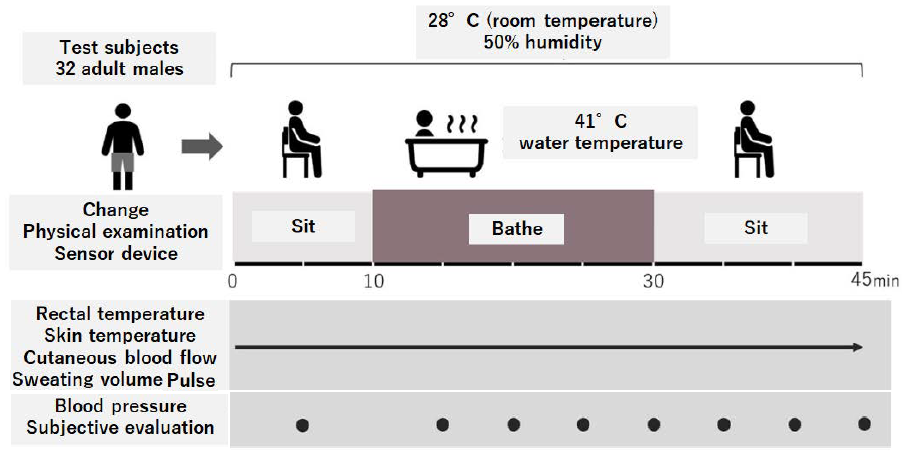ActivityJoint Research Results between Rinnai Corporation and the Center for Designed Futures of Kyushu University Announced on the Relationship between Habitual Bathing and the Prevention of Heat Stroke2023.7.10

Rinnai Corporation released the results of joint research carried out with a research team led by Lecturer Takayuki Nishimura of the Center for Designed Futures of Kyushu University at the 84th Symposium of the Japan Society of Physiological Anthropology held between June 16 and 18, 2023.
The results demonstrated that sweating and vasodilation is increased in humans through repeated bathing on a daily basis. Habitual bathing increases sweat and blood circulation volume during hot weather improving heat dissipation from the body surface, suggesting a contribution to the prevention of heatstroke and summer fatigue.
Background and Objectives of the Research
Heat acclimatization, by which people slowly develop tolerance to hot environments by becoming accustomed to the heat, is believed to be an effective measure against heat stroke, and daily bathing is thought to both enhance sweating and promote heat acclimatization. However, because it was unclear the extent to which habitual bathing as part of daily life actually contributes to acclimatization to hot environments, this research was designed to clarify whether bathing on a regular basis has an impact on individual variation in thermoregulation by measuring that function, including sweating, during bathing.
Experimental methodology
This experiment was carried out using 32 healthy males as test subjects. The environment of the test room was set at a temperature of 28°C and humidity of 50%, and the bathwater was set at a temperature of 41°C. The test subjects remained seated in the bathroom for 10 minutes from the start of the experiment, after which they relocated to the bathtub and remained in it for 20 minutes. They then got out of the bathtub and again remained seated for 15 minutes. The test subjects were also given a survey on their bathing habits to investigate their individual bathing approaches and durations.

Results and Observations
A comparison between 12 habitual bathers (who bathe in a bathtub at least 4 times per week) and 20 non-habitual bathers (who bathe in a bathtub less than 4 times per week) showed a meaningful increase in perspiration during and after bathing among the habitual bathers’ group, as well as a faster rise in blood flow (faster vasodilation). Furthermore, these results showed no change when accounting for age, exercise habits, or BMI. Accordingly, these results suggest that repeated exposure to high heat through daily bathing increase heat dissipation and help prevent heat stroke and summer fatigue even without engaging in high-intensity heat and exercise training.
